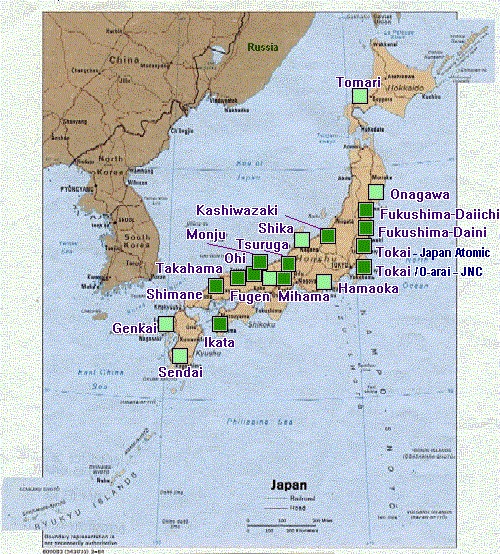Before the Fukushima disaster in 2011, the Japanese fleet of fifty four nuclear reactors supplied about thirty percent of Japan's electricity. Japan has the third largest number of nuclear power reactors behind France and the United States. After the Fukushima disaster, the entire reactor fleet was shut down and none of the reactors has been put back into full-time operation. This has resulted in a rise in the importation of fossil fuels that has caused a negative trade imbalance. There is strong public support for an end to the use of nuclear power in Japan.
The new administration of Prime Minister Abe has made nuclear power and nuclear technology export a major piece of their plan for Japan's economic renewal and expansion. Without nuclear power, Japan will have serious problems satisfying their need for electricity in the coming years. The Japanese public is opposed to restarting the reactors by about a two to one ratio but the Japanese government is moving ahead with its plans to restart at least some of the idle reactor fleet. Laws have been passed to suppress independent reporting on the nuclear disaster and its aftermath. Political pressure has been applied to silence critics. Heavy PR campaigns are being waged to regain public confidence and support for nuclear power.
The shut down gave the Japanese nuclear industry and regulatory agencies time to study the causes of the Fukushima disaster and to make certain that all Japanese nuclear power reactors were in compliance with strict new safety rules. After exhaustive analysis of safety regulations as well as seismological, economic, logistical and political problems associated with restarting the idle Japanese reactors, it appears that some of the reactors may never be restarted.
The most optimistic projections suggest that, at most, two thirds of Japanese power reactors will be able to satisfy all the requirements necessary to resume operation. Of the forty eight remain power reactors in Japan, fourteen will likely be restarted in the near future. Seventeen more may be restarted but there are concerns about them. A final seventeen reactors will likely be retired permanently. The proportion of Japanese electricity generated by nuclear power may fall to about ten percent. Electric utilities will have to pay for decommissioning at least seventeen reactors as well as continuing to pay the higher cost of fossil fuel. This increase in the cost of electricity will have a negative impact on the Japanese economy.
If many of the problematic seventeen reactors cannot be restarted, it will be impossible for nuclear power to be what is called a "base load" power source in Japan. This refers to a power source that is able to feed a minimum amount of electricity to the Japanese power grid as specified in a draft of a new Japanese national energy plan that will be adopted soon by the Japanese Diet. Applications have been filed and tests are being held to restart some reactors. The government is working on restarting the safest and most technically advanced reactors that are in areas where the resistance to nuclear power is weakest. Ultimately the Japanese central government will defer to local sentiment in choosing which reactors to bring back online.
Japan is poor in conventional fossil fuel reserves which made the prospect of nuclear power very attractive. After Fukushima, nuclear power is not looking so good. On the other hand, Japan has incredible alternative energy potential. The Japanese people would be better served by a crash program to harness geothermal and tidal power than efforts to revive the nuclear reactor fleet.
Japanese nuclear power stations:
